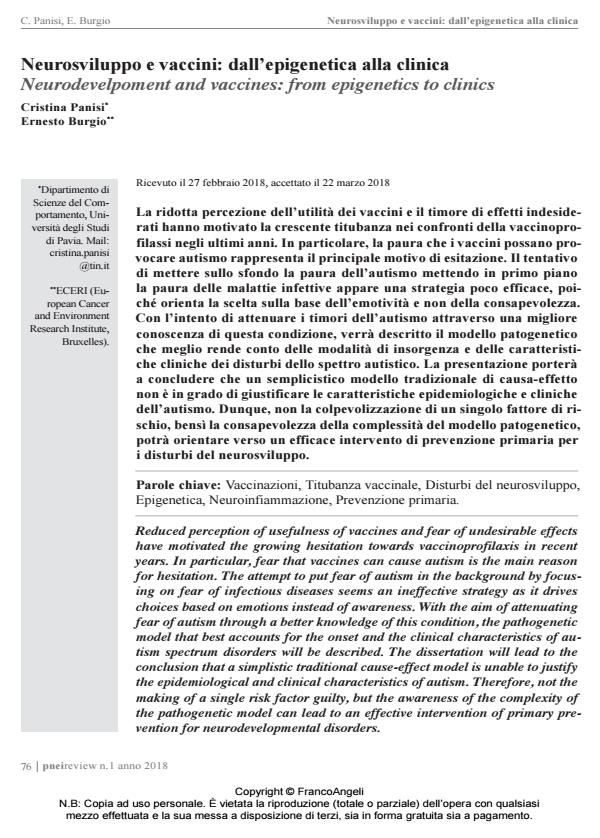Neurodevelpoment and vaccines: from epigenetics to clinics
Journal title PNEI REVIEW
Author/s Cristina Panisi, Ernesto Burgio
Publishing Year 2018 Issue 2018/1
Language Italian Pages 16 P. 76-91 File size 1136 KB
DOI 10.3280/PNEI2018-001007
DOI is like a bar code for intellectual property: to have more infomation
click here
Below, you can see the article first page
If you want to buy this article in PDF format, you can do it, following the instructions to buy download credits

FrancoAngeli is member of Publishers International Linking Association, Inc (PILA), a not-for-profit association which run the CrossRef service enabling links to and from online scholarly content.
Reduced perception of usefulness of vaccines and fear of undesirable effects have motivated the growing hesitation towards vaccinoprofilaxis in recent years. In particular, fear that vaccines can cause autism is the main reason for hesitation. The attempt to put fear of autism in the background by focusing on fear of infectious diseases seems an ineffective strategy as it drives choices based on emotions instead of awareness. With the aim of attenuating fear of autism through a better knowledge of this condition, the pathogenetic model that best accounts for the onset and the clinical characteristics of autism spectrum disorders will be described. The dissertation will lead to the conclusion that a simplistic traditional cause-effect model is unable to justify the epidemiological and clinical characteristics of autism. Therefore, not the making of a single risk factor guilty, but the awareness of the complexity of the pathogenetic model can lead to an effective intervention of primary prevention for neurodevelopmental disorders.
Keywords: Vaccinations, Vaccine hesitancy, Neurodevelopmental disorders, Epigenetics, Neuroinflammation, Primary prevention.
Cristina Panisi, Ernesto Burgio, Neurosviluppo e vaccini: dall’epigenetica alla clinica in "PNEI REVIEW" 1/2018, pp 76-91, DOI: 10.3280/PNEI2018-001007